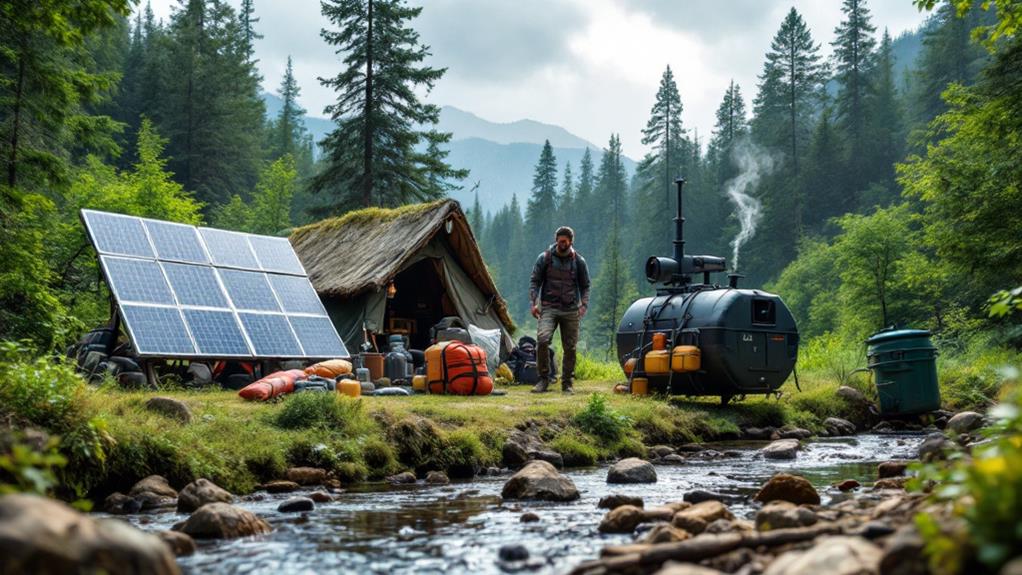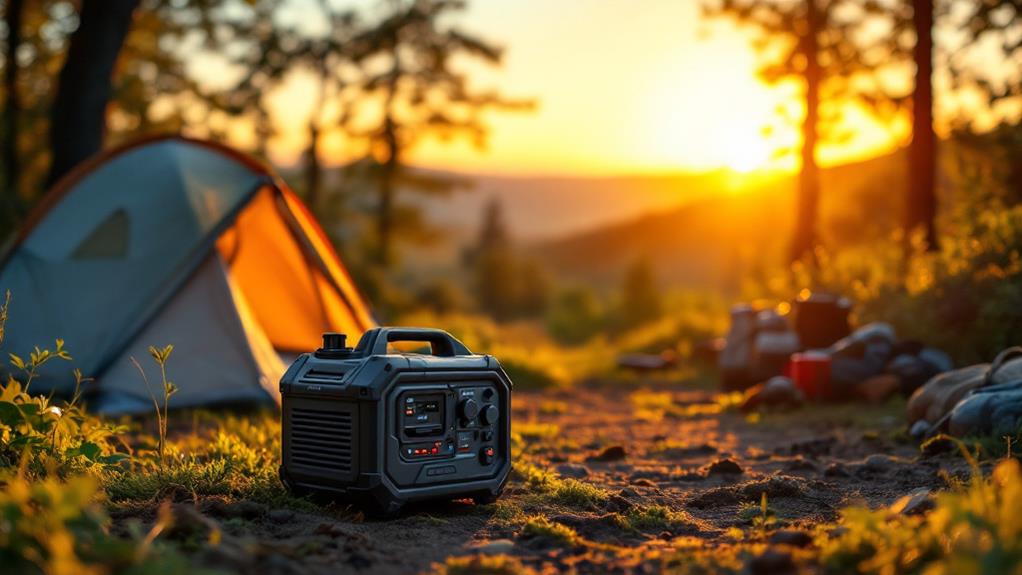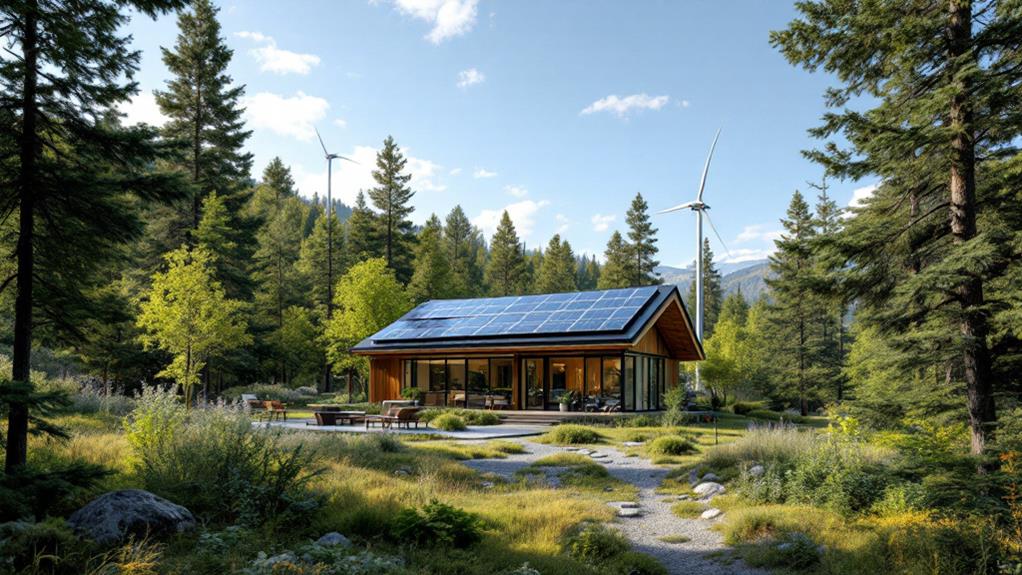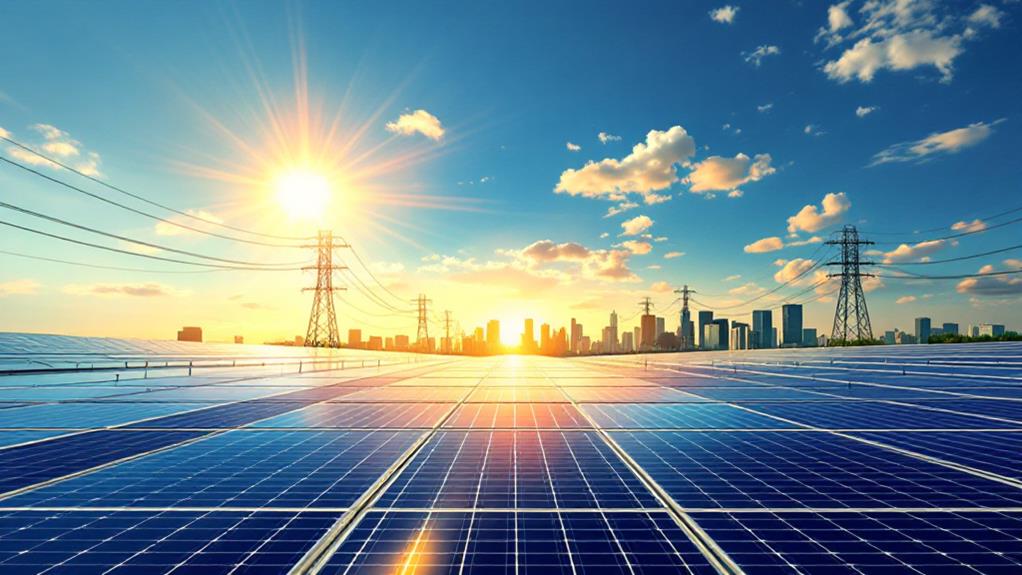Alternative Power Sources for Survival Preparation: What You Need to Know

When preparing for survival, consider using alternative power sources like solar, wind, hydropower, and generators. Solar panels offer reliable energy if you maintain them properly. Wind energy is great if your location has consistent winds; vertical turbines fit well in residential areas and complement solar power. Don't forget portable generators for locations where wind or sunlight may be inconsistent. Hydropower is another option if you have access to flowing water, powering through waterwheel systems. To store energy, utilize battery systems like lithium batteries for efficiency. There's much more to ensuring a sustainable energy setup for survival situations.
Solar Power Solutions
Harnessing the sun's energy is a practical and efficient way to guarantee power availability during emergencies. When you're considering solar power solutions, understanding the basics of solar panel installation is essential. Start by evaluating your energy needs and the available space for panels. This helps you determine the size and number of panels required to meet your needs effectively.
Once you've assessed the fundamentals, focus on the installation process. It's helpful to hire a professional to confirm the panels are installed correctly and safely. Proper installation optimizes solar energy efficiency, providing a reliable power source when you need it most. You'll want to position the panels to capture ideal sunlight throughout the day, enhancing their output.
Regular maintenance is also critical. Cleaning panels and checking connections can greatly enhance their performance. This proactive approach guarantees your system operates at peak efficiency, offering you peace of mind during emergencies.
Wind Energy Options
Many people overlook wind as a viable power source in survival situations, but it can be an excellent option if you have the right conditions. Wind energy is especially advantageous in areas with consistent wind patterns, providing a reliable and sustainable power source. To harness wind energy effectively, you should consider installing vertical turbines. These turbines are well-suited for residential settings as they're compact and operate efficiently even at lower wind speeds, unlike traditional horizontal turbines.
For those planning to live off-grid, integrating wind energy into your power system can greatly improve your energy independence. Wind turbines can complement other renewable sources like solar, creating a more resilient off-grid system. When solar panels produce less energy during cloudy days, wind turbines can help fill the gap, ensuring a continuous power supply.
To get started, assess your local wind conditions and select a turbine that meets your energy needs. Installation can be straightforward, and maintenance is generally minimal. With proper planning, wind energy can provide a steady and clean power source, reducing your reliance on conventional energy grids and improving your self-sufficiency in survival scenarios.
Portable Generators

While wind energy offers a sustainable solution for survival preparation, there are situations where wind conditions aren't favorable or consistent enough to rely on it solely. That's where portable generators come into play. They provide a dependable power source when you need it most. When selecting a portable generator, consider its fuel efficiency. Fuel-efficient models guarantee you optimize power output while minimizing fuel consumption, which is vital in survival scenarios where resources are limited. Look for models that boast longer run times on smaller amounts of fuel; this will keep your necessary devices running longer without constant refueling.
Another significant factor is noise reduction. Traditional generators can be quite loud, disrupting peace and alerting others to your location. Opt for generators that feature noise-reduction technology, keeping operations quieter and more discreet. Many modern models offer this feature without compromising on power output, making them ideal for stealthy survival situations.
Furthermore, consider the generator's size and portability. You want something easy to transport and store but powerful enough to meet your needs. By focusing on fuel efficiency and noise reduction, you can select a portable generator that's both effective and practical for survival preparation.
Hydropower Techniques
Hydropower techniques often provide an efficient and renewable energy source for survival situations. If you're near a flowing water source, harnessing its power can be incredibly beneficial. Micro hydropower systems are perfect for this purpose, as they convert the kinetic energy of flowing water into electricity. These systems are small-scale and can be installed with minimal impact on the environment, making them ideal for personal use in remote locations.
To get started, initially assess the water flow and head (the height water falls) of your chosen site. This information helps you determine the best waterwheel design for your needs. There are several waterwheel designs to evaluate, such as undershot, overshot, and breastshot wheels. Each design has its advantages depending on water flow speed and volume. For instance, an overshot wheel is efficient if you have a significant vertical drop, while an undershot wheel works better in fast-flowing streams with less height.
Once you select a suitable waterwheel, connect it to a generator to begin producing electricity. Regular maintenance, like clearing debris from the wheel, guarantees efficient operation. With the right setup, you'll have a reliable energy source at your disposal.
Battery Storage Systems

After setting up your hydropower system, consider storing the electricity generated for use when the water flow is low or during nighttime. Battery storage systems are vital for guaranteeing a constant power supply. You have a couple of options: lithium batteries and lead acid batteries. Lithium batteries are known for their energy efficiency and longer lifespan, making them a popular choice. They require less maintenance compared to lead acid batteries, which need regular upkeep to confirm they function properly.
Setting up charging stations is significant for keeping your batteries topped up and ready to use. You'll want to connect your batteries to an efficient inverter technology. An inverter will convert the stored DC power into AC power, making it usable for your appliances and devices. It's necessary to choose an inverter that matches your power needs and battery specifications.
Battery maintenance is key for long-lasting performance. Regularly check for corrosion, verify connections are tight, and keep your batteries in a cool, dry place. By maintaining your battery storage system, you'll enhance its efficiency and reliability. With the right setup, you're prepared for any power challenges that come your way.



